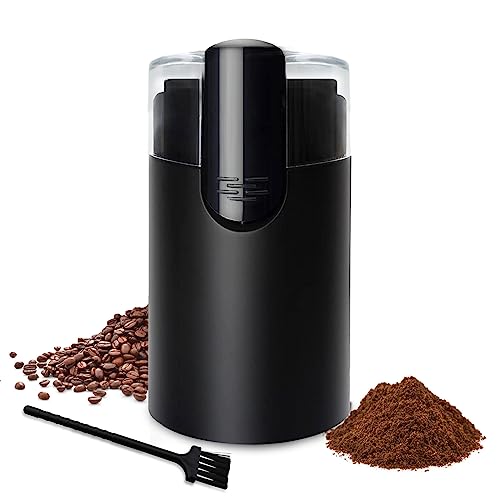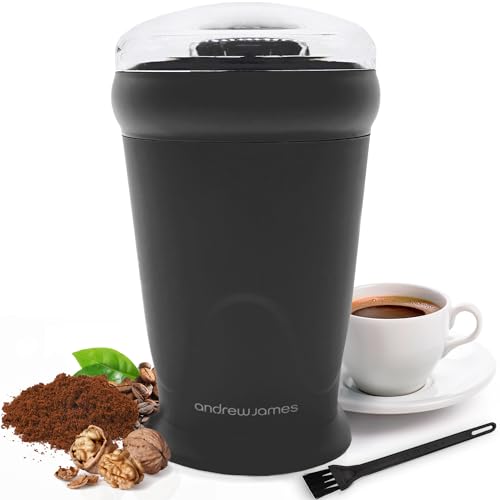Ten Things You Shouldn't Post On Twitter
페이지 정보

본문
 How to Choose the best espresso grinder Espresso Grinders
How to Choose the best espresso grinder Espresso GrindersA grinder with an hopper lets you grind and dispensing the portafilter in one go. This is a great option for people who are just beginning. However, we discovered that measuring the dose before grinding can improve consistency.
 Look for a grinder with flat burrs that will produce an ultra-fine grind. These grinders might be somewhat more expensive, but they provide exceptional results in the cup.
Look for a grinder with flat burrs that will produce an ultra-fine grind. These grinders might be somewhat more expensive, but they provide exceptional results in the cup.User-Friendliness
The espresso grinder is an essential component in the process of making high-quality espresso. Many espresso lovers make the mistake of economizing on a basic grinder to make room for the cost of a high-end coffee maker, but serious espresso lovers know that the quality of the grind is what distinguishes good espresso from excellent. Choose a grinder that features precise grind adjustment, the capability to dispense consistently and is made of high-quality materials.
A burr mill grinder grinder creates a fine and consistent grind that is perfect for espresso. Blade grinders, on other hand, produce an inconsistent grind that can result in inconsistent flavors and textures. Blades also generate heat when they chop the beans which can alter or alter the flavor.
In our tests, we discovered that the top espresso grinders were simple to operate and gave precise control over the size the grounds. You should search for grinders with an easy cleaning process with a tiny amount of coffee ground (to stop the coffee from clumping), as well as a fine, uniform grinding without overheating the burrs.
Grind-by-weight grinders are a favorite among espresso lovers since they allow you to set the desired weight (in grams) and dispense exactly that amount into your portafilter. They may not hold enough ground coffee to work well when tested using a single dose. The Baratza Sette 270 was the only grinder we tested that could deliver consistent shots when using this method.
These grinders could be affordable and easily accessible however, they can be difficult to use with an espresso machine at home because their small size causes the hopper to fill quickly. They're also susceptible to overheating, and can lose their fineness with time. The MiiCoffee DF64 II is a great alternative to an ordinary knife grinder. It utilizes flat burrs and is affordable for a top-quality grinder designed specifically for espresso. If you're an avid coffee lover then you should consider purchasing the SSP burrs to achieve an even finer grind. The MiiCoffee DF64 II also has more quiet operation than its counterparts. This makes it a great option for those who want to keep noise levels down.
Grind Size Adjustment
In the process of making espresso, a fine grind size is essential to ensure the Best espresso Grinder extraction. It is an extremely delicate balance between many factors, including temperature, coffee, and pressure. This is why it requires precise control. It is essential to have a grinder that is capable of producing a smooth grind and being able to adjust it quickly.
Grind size adjustment options are available on all coffee grinders for home and commercial use. These features are ideal to adjust the grind size to match the size of each batch of coffee beans. They can also assist in maintaining an even grind over time. Some grinders are more difficult to maintain a more fine grind than others. Some do not have the ability to adjust the grind settings.
If you're in search of an espresso grinder that can offer a fine grinding, look for a model that specifically states it can micro-adjust its grinding size or that utilizes flat burrs instead of conical ones. The latter are less prone to losing their calibration over time, which could be caused by heat and motor vibrations, as well due to normal wear and tear.
To alter the size of the grind on an espresso grinder, you'll need to access its adjustment ring. This is typically located on the side or the top of the grinder, but in some models, it's integrated into the hopper itself. To increase the grind size, simply turn the ring clockwise. Turn it counter-clockwise to reduce the size of the grind.
After you've found the ideal grind size, be sure that any retained ground coffee is cleared out of the adjustment system before returning to it. This helps prevent obstruction and allows you to precisely adjust the size of the grind.
This is especially important for grinders with stepped adjustment styles. These are often found on Gaggia or Saeco grinders. If the adjustment ring is filled of partially ground coffee and the grinder is unable to handle it, it will require more force to move the ring to a new setting which could result in inaccurate results or even damage the mechanism that grinds coffee. It is important to keep in mind that the size of the grind could require a change from one batch to the next, depending on how the beans are roasted and prepared.
Control of Flow
Flow control is the ability of the grinder to adjust enough to ensure that espresso shots pass through the grinder quickly and smoothly. Even the smallest adjustments could have an impact on your coffee's quality because there is a lot of pressure being applied to the puck. This is the reason it's essential to find the right grinder to produce an extremely finely-grounded consistency.
There are two types of espresso grinders: those with a step-down adjustment, and those with a stepless one. Grinders that have an adjustable stepped feature will usually have an hopper-shaped or lever-shaped knob which moves in a series of steps. There will be a sound with each turn of the knob and each click will indicate the coarser or finer grind setting. This type of grinder is liked by a lot of beginners and home baristas due to the fact that it is simple to master and use.
On the other hand, grinders that use an adjustable step are preferred by aficionados because they are easier to manipulate with precision. One method to test a grinder's flow control is to put some water in the portafilter, and then watching the water flow through the grounds. The top grinders are able not only to produce a finely-ground consistency, but also deliver a constant flow of water throughout the entire shot.
Another aspect to consider when selecting a grinder for espresso is whether you'd like a dosing model or a non-dosing one. Dosing models have a sectioned container that the ground coffee is dispensed into when you press the button. Some models can hold up to 7 grams of coffee ground and some models can be adjusted to dispense more or less than this amount. Dosing grinders, on other hand, can dispense the grounds directly into a portafilter or other receptacle.
Some grinders, like the Baratza Sette 270 have a V-shaped fork which you can nestle the portafilter inside to collect the dirt. This is a great feature because it saves time and makes cleaning up easy. It's important to keep in mind that there is no way to distribute the coffee evenly into the container, and you'll need to rotate or flip the portafilter during doing.
Safety
Like all commercial equipment, espresso machines require an additional level of certification than models for consumer use. You should search for the grinder with either an ETL mark or NSF marking. Both marks indicate that the grinder was examined by the appropriate authorities to ensure its safety in commercial applications. Some grinders feature an additional label from UL (Underwriters Laboratories), but this is not as common and less important.
Aside from security, you need a grinder that is simple to clean and maintain. It is recommended to look for a removable ground chamber that makes it easier to transfer the coffee to your brewing device. This is a common feature on most manual espresso grinders, and we particularly enjoyed the design of the grounds chamber on the Baratza Encore ESP--it features a small divot that allows you to nestle the lip of a portafilter container inside and capture the coffee without spilling. Other grinders, such as the Baratza Sette 270 or Rancilio Stile had built-in v-shaped forks which serve the same purpose but were less convenient and didn't work with our sample portafilters.
Another aspect to consider is the grinder's material and shape. Choose between stainless steel and ceramic. Both are highly valued in the coffee industry due to their consistency and balanced results. You can also decide whether you prefer conical or flat burrs. The former tends to produce fewer heat fluctuations, but it's all personal preference.
Once you have picked the best espresso grinder grinder, do a few easy maintenance tasks to ensure it is in good working order. After each use, clean the grind chamber and the burrs with a lint-free cloth paper towel to eliminate any remaining coffee particles and residues from the grinding process. You should also conduct periodic deep cleaning from time to time. This is done by disassembling the grinder and using an appropriate cleaning solution or water and vinegar to soak the parts that are removable, then rinsing them thoroughly and drying them completely before taking them back together.
You can also use an organic lubricant that adds an oil-like layer to the grinding chamber and the burrs. This will help prevent corrosion, rust and help keep the burrs in alignment.
- 이전글Guide To Bioethanol Fireplace Insert: The Intermediate Guide In Bioethanol Fireplace Insert 24.12.17
- 다음글Guide To Gas Certificates Milton Keynes: The Intermediate Guide To Gas Certificates Milton Keynes 24.12.17
댓글목록
등록된 댓글이 없습니다.